There is a fine line between a place existing peacefully off the beaten path, and finding itself slap-bang on the tourist trail. It’s a line on which Rue Crémieux is wavering.
The small street in Paris’s 12th arrondissement is a colourful anomaly among the city’s sandy Haussmann architecture. It lies a few turns from Gare de Lyon, down the street from Bastille. There isn’t much to attract tourists to the area, and in a pre-Pintrest/Instagram world, it’s likely Rue Crémieux could have remained a legitimate hidden gem to be stumbled upon by straying sightseers.
They would wander down Rue de Lyon or Rue de Bercy and, catching sight of the splash of colour, be enticed to explore. Wide-eyed they would stroll along the cobblestones, delighting in the charm of a street that is almost as un-Parisian as you can get.
But accidental visitors are few and far between on Rue Crémieux these days.
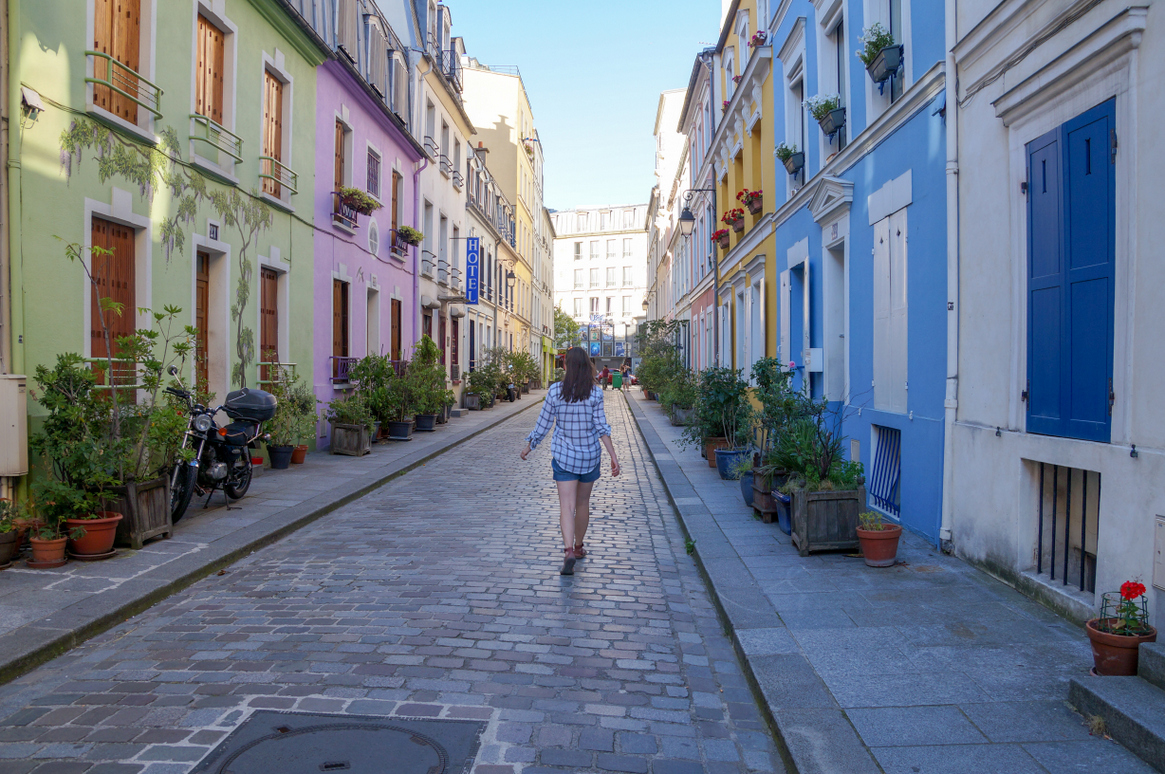 On an early summer evening, I walked down Rue de Lyon knowing exactly what I was looking for. My curiosity had been piqued by one of the many pictures on social media. The street was as every bit as lovely as those photos suggested.
On an early summer evening, I walked down Rue de Lyon knowing exactly what I was looking for. My curiosity had been piqued by one of the many pictures on social media. The street was as every bit as lovely as those photos suggested.
The coloured facades and bright shutters were an intriguing contrast to Paris’s usual style. The playful trompe-l’œil and artwork made me smile. And the bushy pot plants crowding the footpath created a sense of home and community.
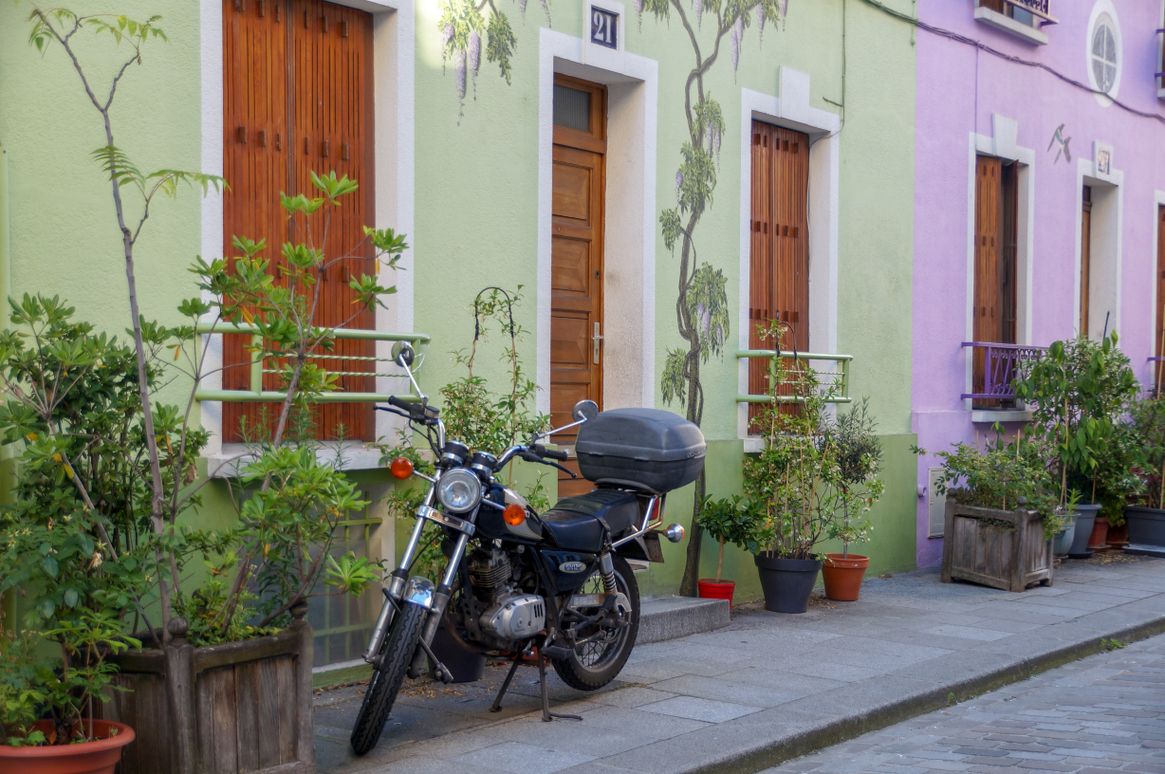
It was a place to enjoy slowly and soak up the details: the cat chasing the birds at number 28, the tiny ring in the bird’s beak above the door at 23, the trio of little black ducks at 28. People carrying briefcases and shopping, perhaps on their way home from work, walked purposefully down the street without a glance at their surroundings. Three girls walked up to a house and let themselves in – evoking envy from the tourists captivated by the colourful doors and curious what was behind them. Another two girls sat on the footpath, under the clock, drinking wine.
It was enchanting.
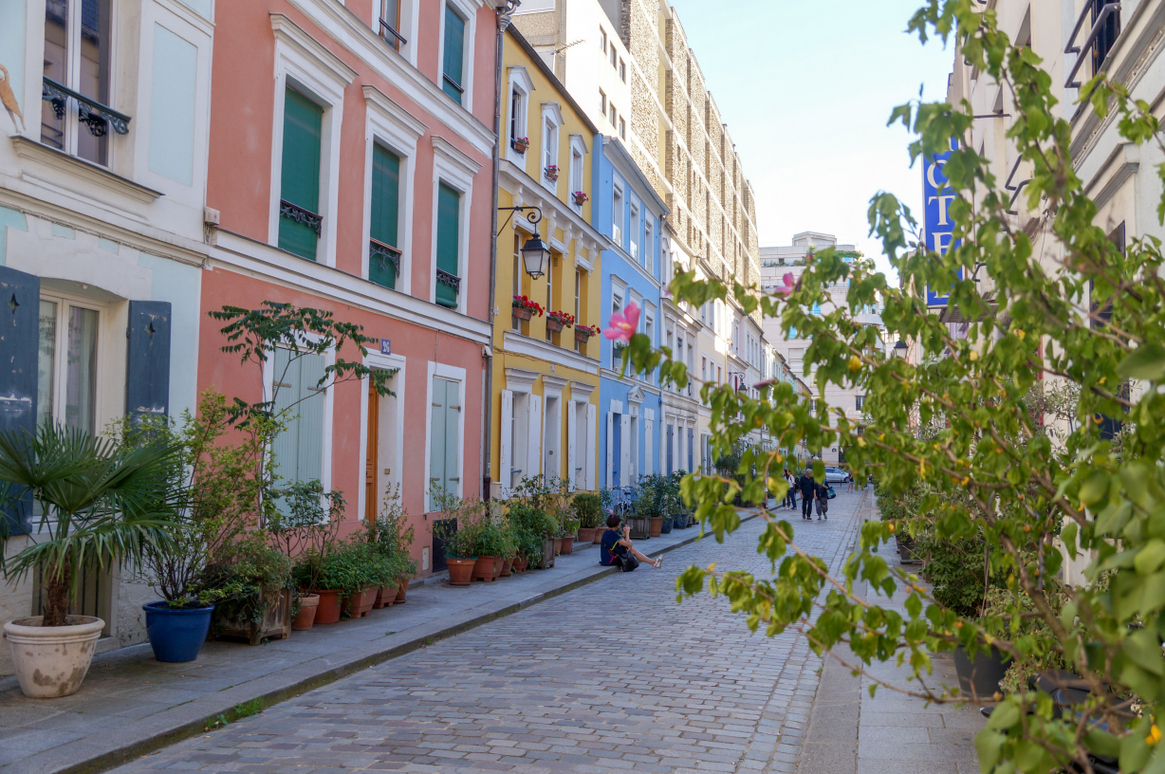
The tidy row of buildings was allegedly inspired by England’s terrace houses. The pastel facades, trompe-l’œil and abundance of foliage and flowers are the work of the residents. The result has earned Rue Crémieux obvious comparisons with London’s Notting Hill for its resemblance to Portobello Road. But the story of how this charming lane came to be is hard to piece together.
Some of its history is well documented – the street, originally known as d’avenue Millaud, opened in 1865. It was renamed to Rue Crémieux to honour Adolphe Cremieux, the lawyer and politician behind a decree in 1870 giving French nationality to Jews in Algeria.
Many articles will inform you the street is 144 metres long, and of the plaque at number 8 that commemorates the floods of 1910, when the Seine overflowed and rose to 1.75 metres in Rue Crémieux. There are sketchy details of a newspaper printing press operating in the basement of one of the houses, and a grocery store in another.
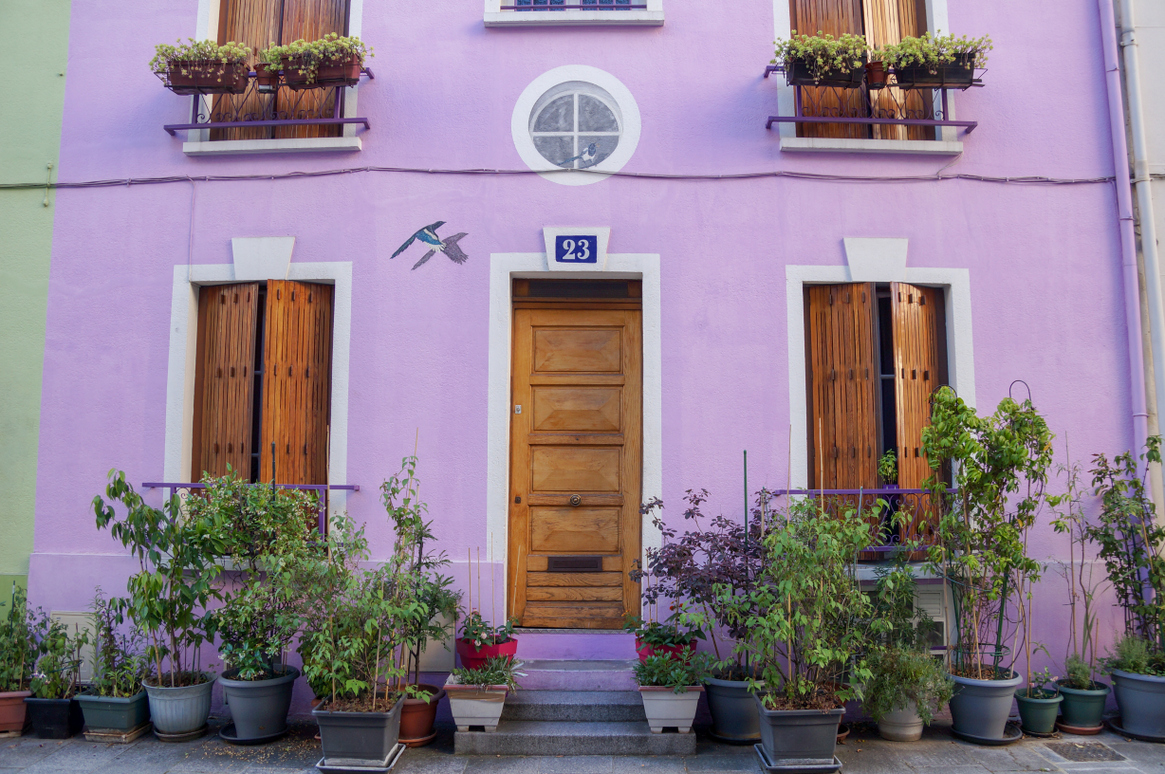
Rue Crémieux’s oldest resident, who bought his house in 1969, remembers it as a busy street and has witnessed the transformation. Attempts in the 1980s to cover the old, worn cobblestones with asphalt were thwarted by the residents, who stopped the bulldozers sent in by the City. Jacques Chirac was the Mayor of Paris at the time. The residents negotiated with the Town Hall and the result was a freshly paved pedestrian-only street.
The history of the colourful buildings is harder to determine. From what I’ve read, one owner painted their house and the rest followed suit. The people who live here are clearly passionate about their home. The charm of Rue Crémieux – the painted houses, car-free cobbled street, and the sense of community – is their doing. But in achieving this, they have also created an appeal that threatens to destroy it.
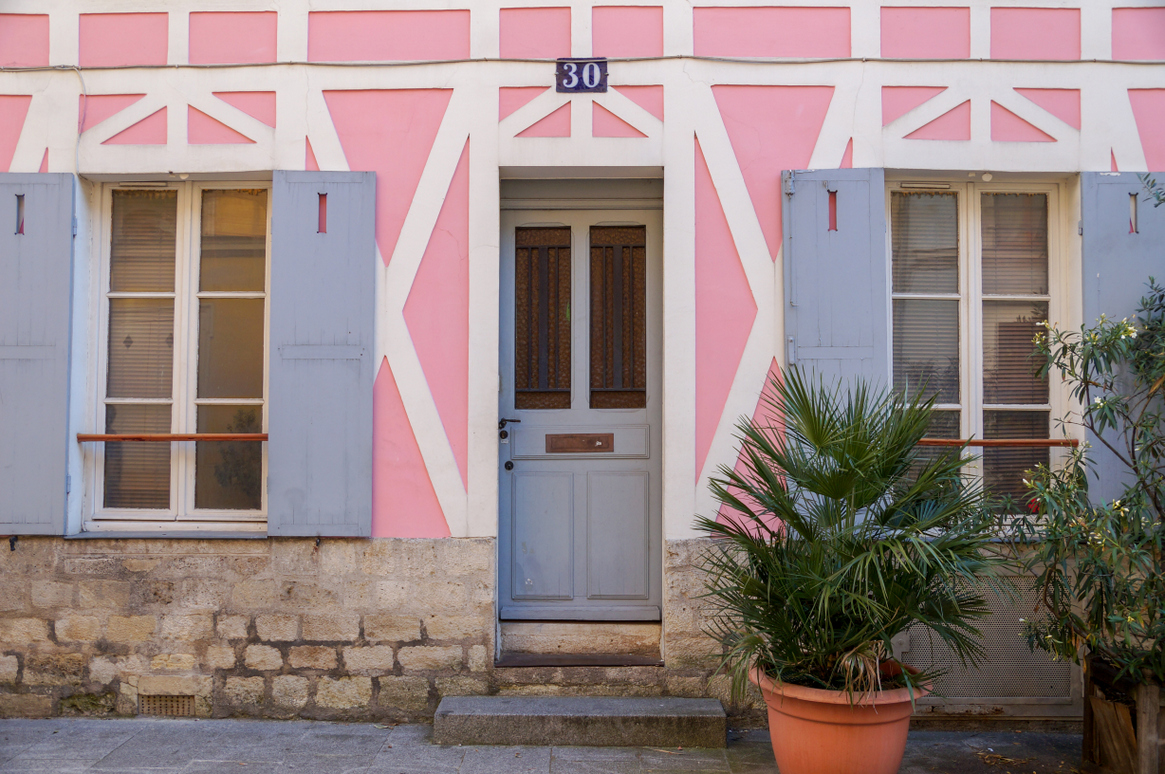
As I walked along Rue Crémieux I couldn’t help feeling I was encroaching on someone else’s paradise. Curtains protected the residents from nosey tourists like me, but as I walked past the windows I felt slightly uncomfortable poking around someone’s house with my camera. One house had stuck up a sign of a camera with a cross through it, and well, I couldn’t blame them.
Rue Crémieux is Instagram fodder to a T. It is exactly the kind of place you see a picture of and think ‘I must go there’ – just as I did – and in the world we live in, the transition from a little known sight to a must-see attraction is quick. Just like that, a peaceful street can start receiving hundreds of visitors a day. Rue Crémieux has become hugely popular with fashion bloggers in particular, to the extent a French blogging website received a note from a committee of residents asking bloggers to stop visiting the street because they are tired of people posing on their doorsteps. The residents wrote they felt they couldn’t leave their house.
Reading the translated message later, I felt guilty for treating someone’s home as a photo backdrop. But on the street, I sat on someone’s step to pose for a photo, and although I didn’t go as far as lifting a door knock and pretending to tap on someone’s door (true story – I saw the pic on Instagram!), I wish I’d considered how I would feel if someone parked themselves on my front door to take a photo. The people who live here didn’t set out to create an attraction, yet that’s what Rue Crémieux has become.
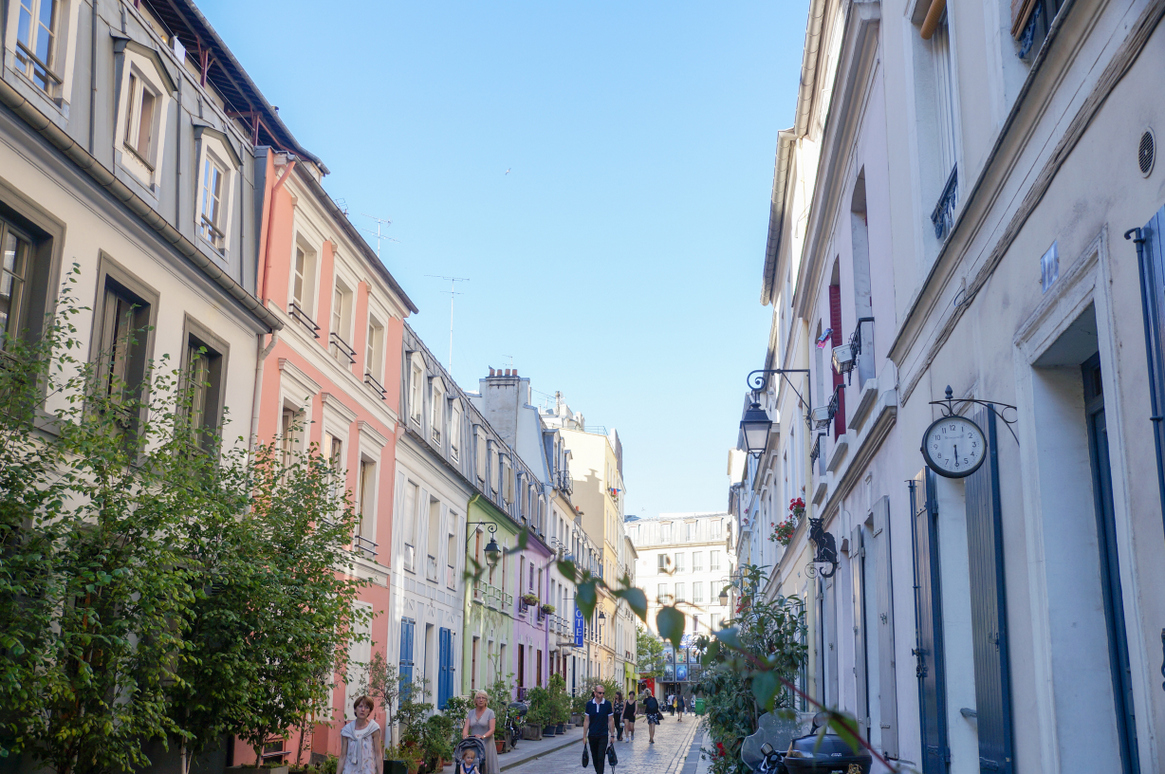
What I loved most about Rue Crémieux was the authenticity. Everything that makes it special has evolved organically through the residents’ imagination and creativity. When I visited I could spot the tourists, like me, photographing every detail, but there weren’t that many. Even the three girls having a photo shoot at the end of the street weren’t too distracting. I felt I was still able to enjoy Rue Crémieux’s charm.
But as it appears in more Instagram feeds, Pintrest boards and blog posts (like this one) it risks crossing that line onto the tourist trail. Those visitor numbers will increase and it wouldn’t take much for this narrow cobbled street to feel crowded. Would it still feel as authentic then? Would I be as enchanted if I was sharing it with so many other people?
I don’t regret visiting Rue Crémieux. It is a charming and quirky patch of Paris and I’m glad I experienced it. And I would encourage other people to see it, particularly if you know Paris well and want to see something different. If you do visit, please act respectfully and remember these buildings are people’s homes. As tourists we should always be aware of the impact we can have as we explore the world, even if it’s just a stroll down a colourful street in Paris.

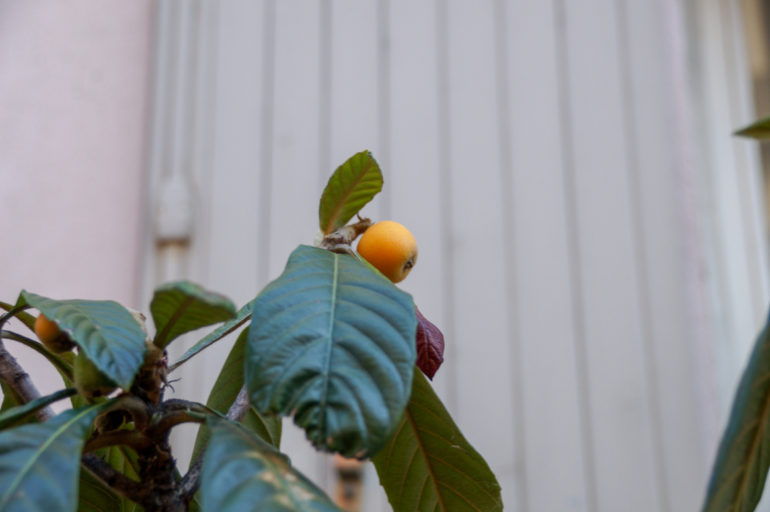
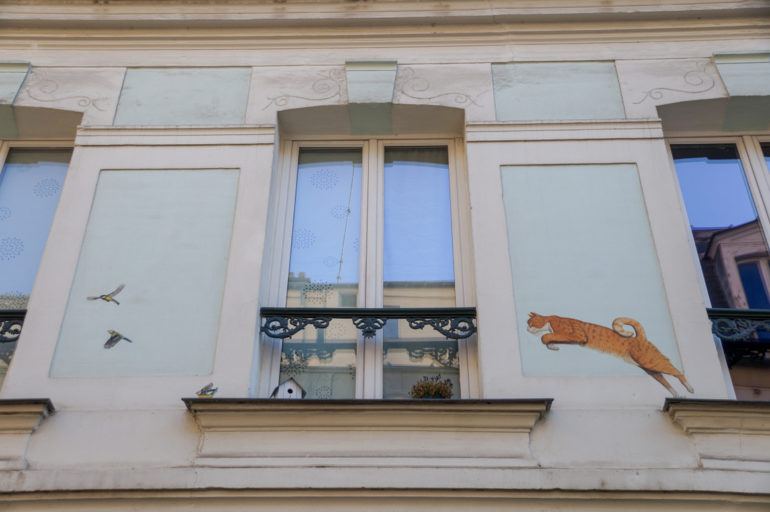
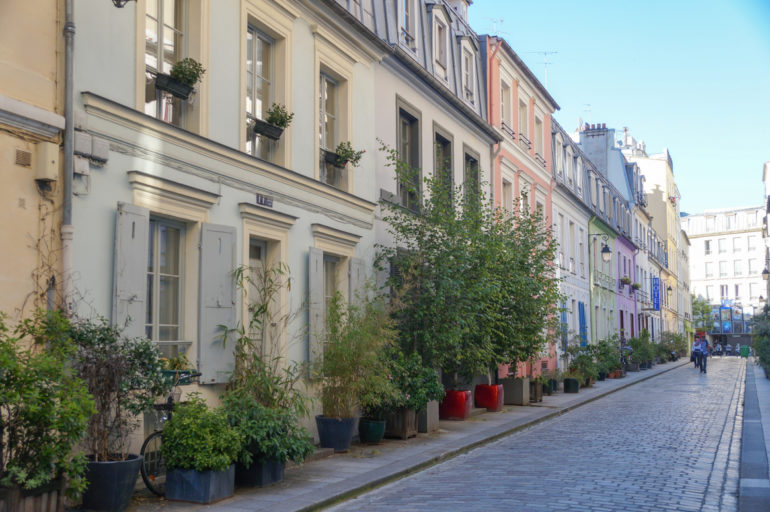
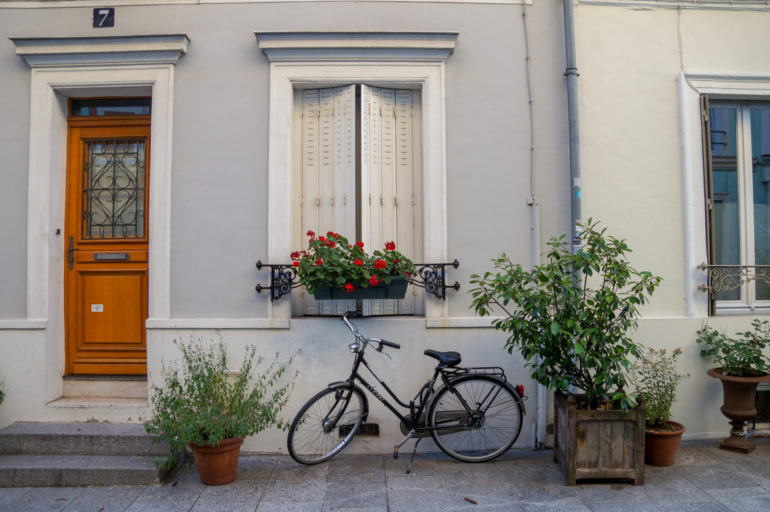


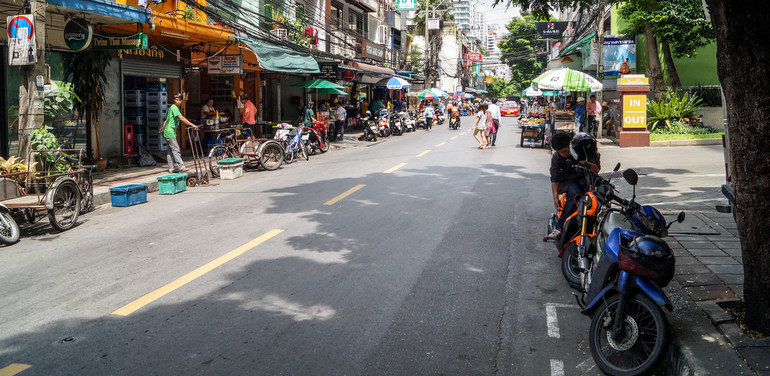


7 Comments
Those poor residents! Instagram and blogger hot spots are a funny thing. There is one stoop in Fremantle that I swear every blogger shots at and I can not help but think that the business it belongs to must HATE it. I have been to Bastille but never made my way to this cute spot. I think the regular Parisian streets are stunning enough- you can literally take a photo on any corner!
Thanks for sharing this story, it is so quirky and cute. I love the cat painting!
xx Jenelle
http://www.inspiringwit.com/
Thanks Jenelle. I feel for the residents too. Maybe everyone will tire of it soon and they can get their street back
Such a pretty place but I don’t think I would want to live there with all the tourists visiting my street!
I wouldn’t want to live there either Anne. Nice to visit for a few minutes though.
Pingback: Twixmas travel plans |
I know this post is a couple years old now, but I just now stumbled across it and fell in love. This is also my first time hearing about Rue Cremieux, so I must have somehow missed the Instagram craze. I wonder if this place is still overrun by tourists now or if they’ve finally been able to get some peace and quiet. PS — Your pictures are all so gorgeous <3
Thank you
Judging by the number of Instagram pics of people sitting on doorsteps, I think Rue Cremieux is still overrun by tourists.